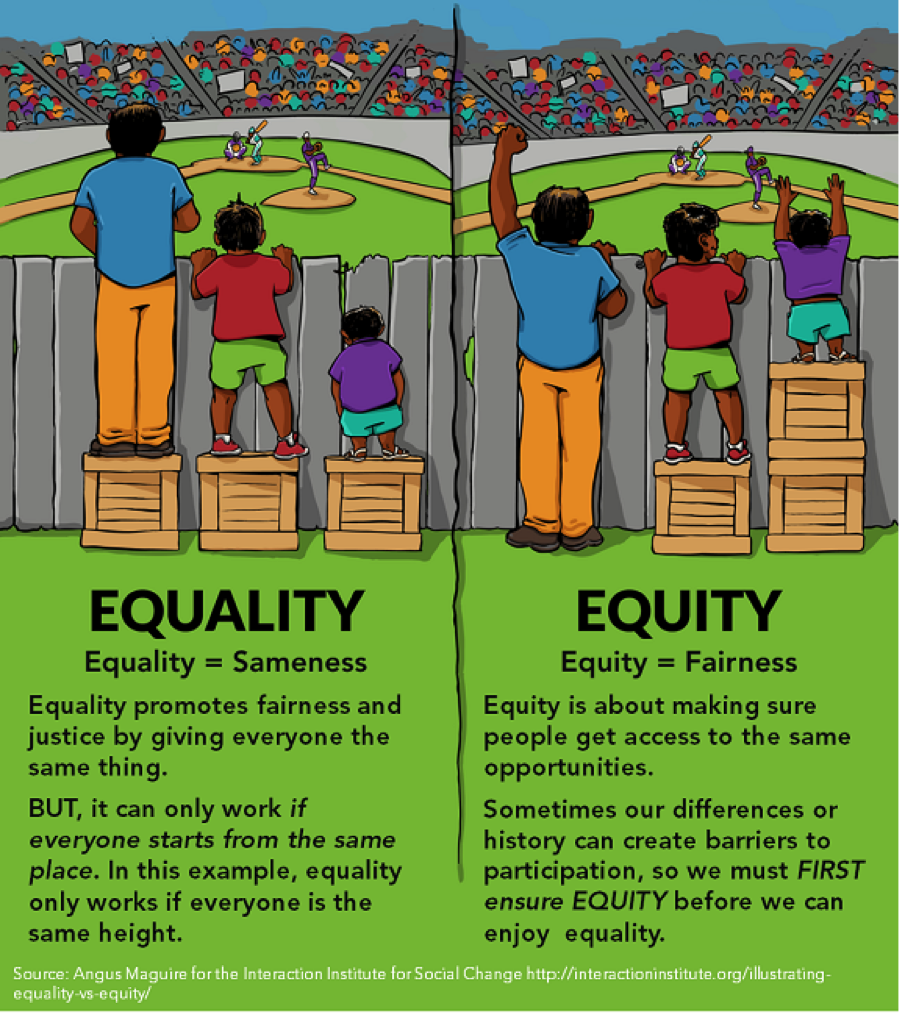This is the first post in our EDI (equity, diversity, and inclusion) Vocabulary Series where we will be dedicating posts to terms and concepts commonly used in equity, diversity, and inclusion work. To kick the series off, we will be defining what equity, diversity, and inclusion mean.
Before we define equity, it is helpful to first define diversity and inclusion.
Diversity
Diversity includes, but is not limited to, age, ethnic origin, national origin, race, color, sex, sexual orientation, gender identity, gender expression, marital status, disability, religious beliefs, creeds and income.
Inclusion
Ensuring that all (regardless of identity) are able to fully participate, are valued, and welcome.
Diversity can be understood as having differences represented. Inclusion then can be seen as the steps we take to ensure that all of those differences are respected. In a team diversity can be seen as the who. Who do we have on our teams? Who are the students at our school? Inclusion can be seen as the how. How do we make sure that we are representing these populations? How can we ensure their voices are being heard? One example to remember the difference is: Diversity is being asked to the party. Inclusion is being asked to dance.
Equity
So now that we have an understanding of diversity and inclusion, we can move onto equity. Often times the concept of equity is confused with equality. The graphic below is often used to help distinguish the difference between these two terms.

As the picture above illustrates, equality is about everyone getting the same thing. Equity is about fit and ensuring people get what they need to be successful and what is best for them. Imagine if everyone in a classroom was given a pair of shoes. That would be an example of equality because everyone got the same exact thing. The reality is that we all do not have the same size feet. So if everyone was given size 6 shoes, the likelihood that those shoes would fit everyone is very slim. Equity would be everyone getting shoes that fit them in their specific size.
Just as everyone has a different shoe size we all start off in different places in our lives and have different experiences. At LeadMN we understand that many of our students do not have the same access and opportunities to education. That is why we are committed to addressing the opportunity gap in education and the systemic barriers that prevent students of color and other historically marginalized backgrounds from succeeding. Read the LeadMN equity statement and follow our initiatives around this work on our equity and inclusion advocacy page to learn more.